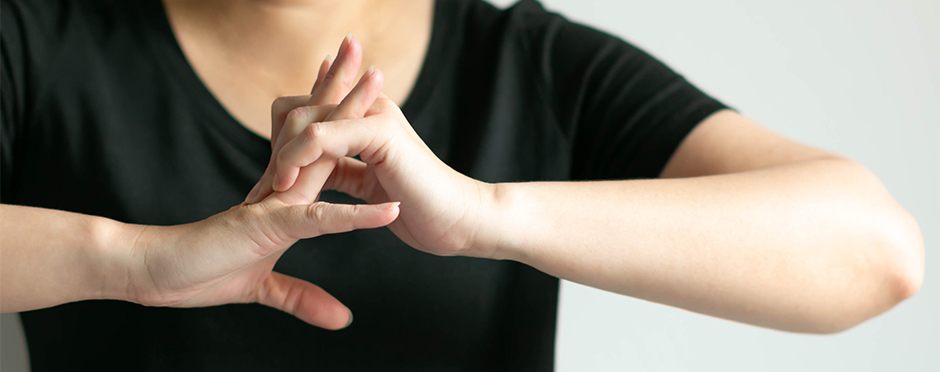
What’s In A “Pop”?
1 CommentOne of the most common questions physical therapists receive is if “pops” and “cracks” are good or bad for your joints.
First of all, we need to understand what causes the popping and cracking in our joints.
Physical therapists are trained to be able to safely and intentionally create a pop or a crack through what we call manipulations. Manipulations are maneuvers that involve a high velocity and low amplitude thrust (HVLAT) force to a joint. This can be applied to different body parts including most commonly the neck and back areas. Some people are able to self-manipulate and get a pop on their own, such as cracking their neck or knuckles. The pop that we hear with a manipulation is the release of intra-articular gasses due to a quick release of pressure within the joint.1 It is also important to note that there is no evidence that pops and cracks in the joints result in early arthritis or any future problems.2
A manipulation from a trained physical therapist will usually result in a short term relief from pain, an increase in flexibility and overall better movement. However, a person may not always have an audible pop or crack when having a manipulation performed on them, but we now know that this is not the best indicator of an effective maneuver. Research has shown that there were no significant differences in the autonomic pain response in people who had an audible pop and those who did not when a manipulation was performed.3
So, does it matter if we get a pop or not when a therapist performs a manipulation?
No, it does not matter! The manipulation maneuver from a physical therapist will still help with reducing pain with or without the audible pop. The good news with this is if the therapist can reduce the patient’s pain with a manipulation or manual therapy, the patient will be able to perform more exercises in physical therapy and become more functional, which is the ultimate goal and is what will lead to long-term, lasting results. The pairing of manual therapy and exercises is a great combination in reducing pain and improving overall function.
If you are interested in seeing a physical therapist and receiving manual treatments including possibly a manipulation, reach out to a nearby Athletico clinic to request an appointment with a therapist specializing in manual therapy.
Appointments are available in-clinic and virtually through our telehealth platform.
The Athletico blog is an educational resource written by Athletico employees. Athletico bloggers are licensed professionals who abide by the code of ethics outlined by their respective professional associations. The content published in blog posts represents the opinion of the individual author based on their expertise and experience. The content provided in this blog is for informational purposes only, does not constitute medical advice and should not be relied on for making personal health decisions.
References:
1. Kawchuk, G. N., Fryer, J., Jaremko, J. L., Zeng, H., Rowe, L., & Thompson, R. (2015). Real-Time Visualization of Joint Cavitation. Plos One, 10(4). doi: 10.1371/journal.pone.0119470
2. Simkin, P. A. (1990). Habitual knuckle cracking and hand function. Annals of the Rheumatic Diseases, 49(11), 957–957. doi: 10.1136/ard.49.11.957-b
3. Bialosky, J. E., Bishop, M. D., Robinson, M. E., & George, S. Z. (2010). The Relationship of the Audible Pop to Hypoalgesia Associated With High-Velocity, Low-Amplitude Thrust Manipulation: A Secondary Analysis of an Experimental Study in Pain-Free Participants. Journal of Manipulative and Physiological Therapeutics, 33(2), 117–124. doi: 10.1016/j.jmpt.2009.12.008

1 Comment
Cecilia Bruce-Annan
My mum has arthritis she is 89 years old and she Stands leaning forward
Also myself my back is constantly tense
Is their any pop therapy you can advise to give to the both of us please